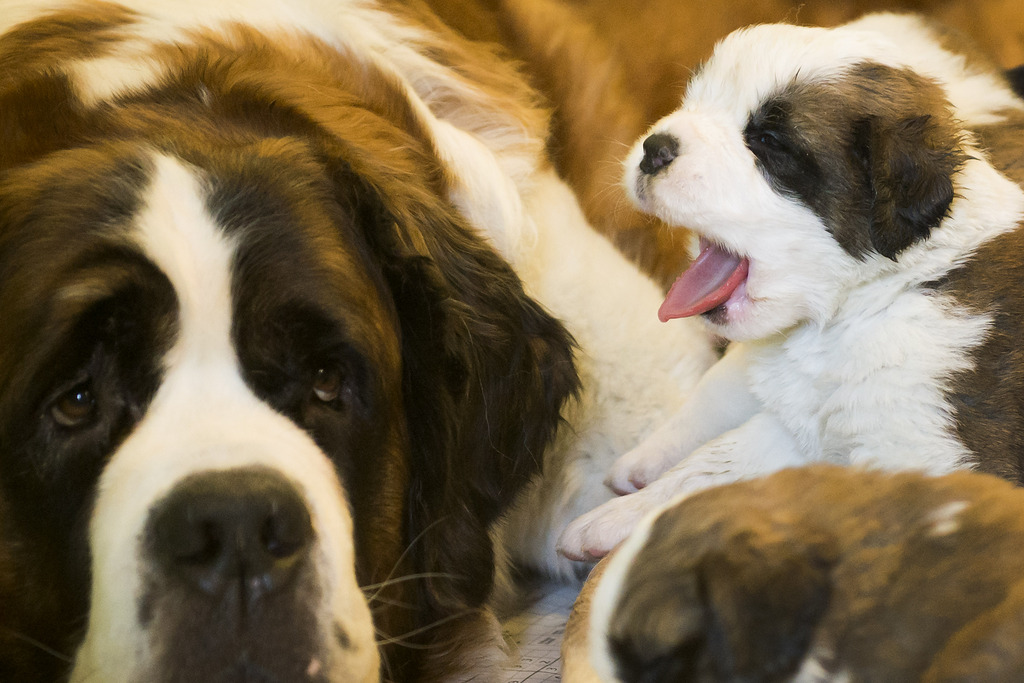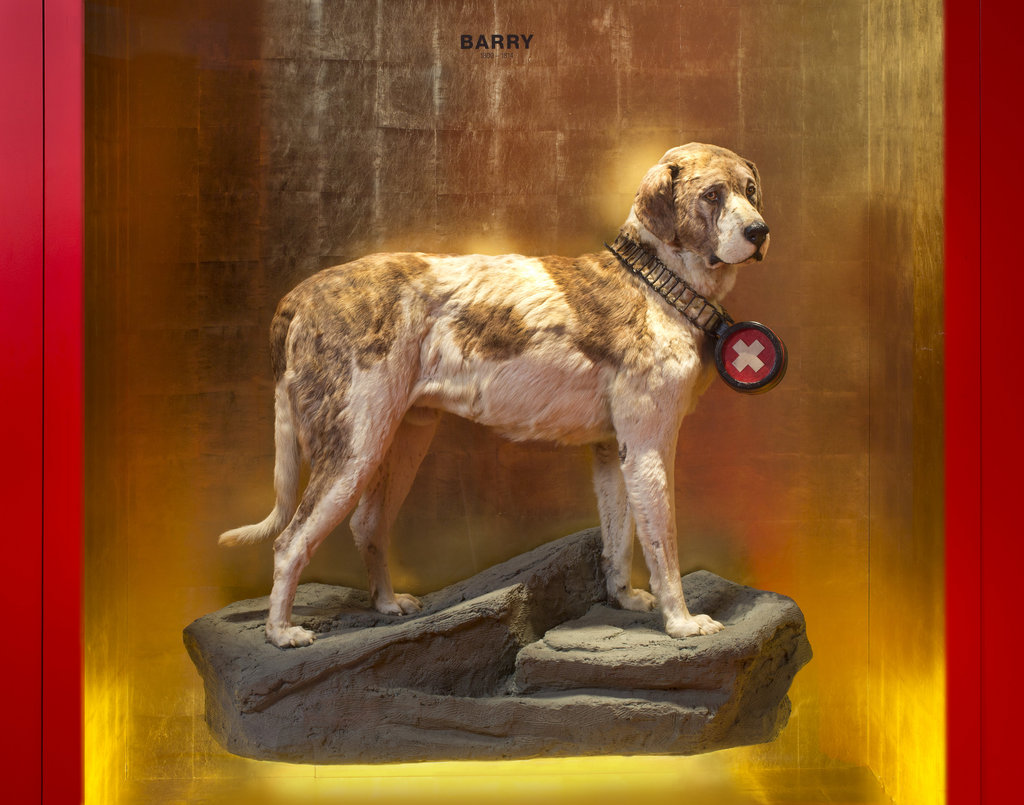St Bernard breeding: why Barry got a bigger head

Barry’s story is also a story of dog breeding. Looking at him in his golden shrine-like display in Bern, one can’t help noticing that he looks more like a proud, athletic Labrador than a lugubrious, hulking St Bernard.
The dogs at the Great St Bernard Hospice were mongrels – the canons did not care about appearance. The St Bernard breed as we know it only developed after Barry’s death.
“Towards the end of the 19th century, when pedigree breeding began in earnest, appearance suddenly became the only thing that mattered,” Rudolf Thomann, head of the Martigny-based Barry FoundationExternal link, said. “The English in particular developed a liking for enormous dogs and were prepared to pay extremely high prices for them.”
“The thinking was ‘bigger is better!’” agrees Marc Nussbaumer, who at Bern Natural History Museum is in charge of the largest collection of dog skulls in the world.
“What’s very special about dog breeding in general is that when you have a breed which is characterised by some special morphological aspect – large head, small head, long fur, short fur – you want to accentuate that special characteristic,” he said.
“A St Bernard had two main characteristics: size and a heavy head, and that’s why those became exaggerated, to the degree that nowadays we want to breed them a bit smaller again.”
In fact, in 1923, Barry’s stuffed body was modified because it no longer conformed to the public’s expectation of the breed. His head was made bigger (the original skull is shown in a separate case) and his legs were stretched by about 10cm (look closely and you can see the difference in fur colour and texture).
In addition, his head was raised, to “correct” the previously submissive stance and make him appear more noble and heroic.
Barry weighed 40-45 kilograms whereas modern St Bernards can weigh more than 100kg. His current mounted height is 64cm, but he would have been slightly smaller when alive. Modern St Bernards are 70-90cm at the withers (ridge between the shoulder blades).

More
Barry the St Bernard: from farm dog to national hero

In compliance with the JTI standards
More: SWI swissinfo.ch certified by the Journalism Trust Initiative









You can find an overview of ongoing debates with our journalists here . Please join us!
If you want to start a conversation about a topic raised in this article or want to report factual errors, email us at english@swissinfo.ch.